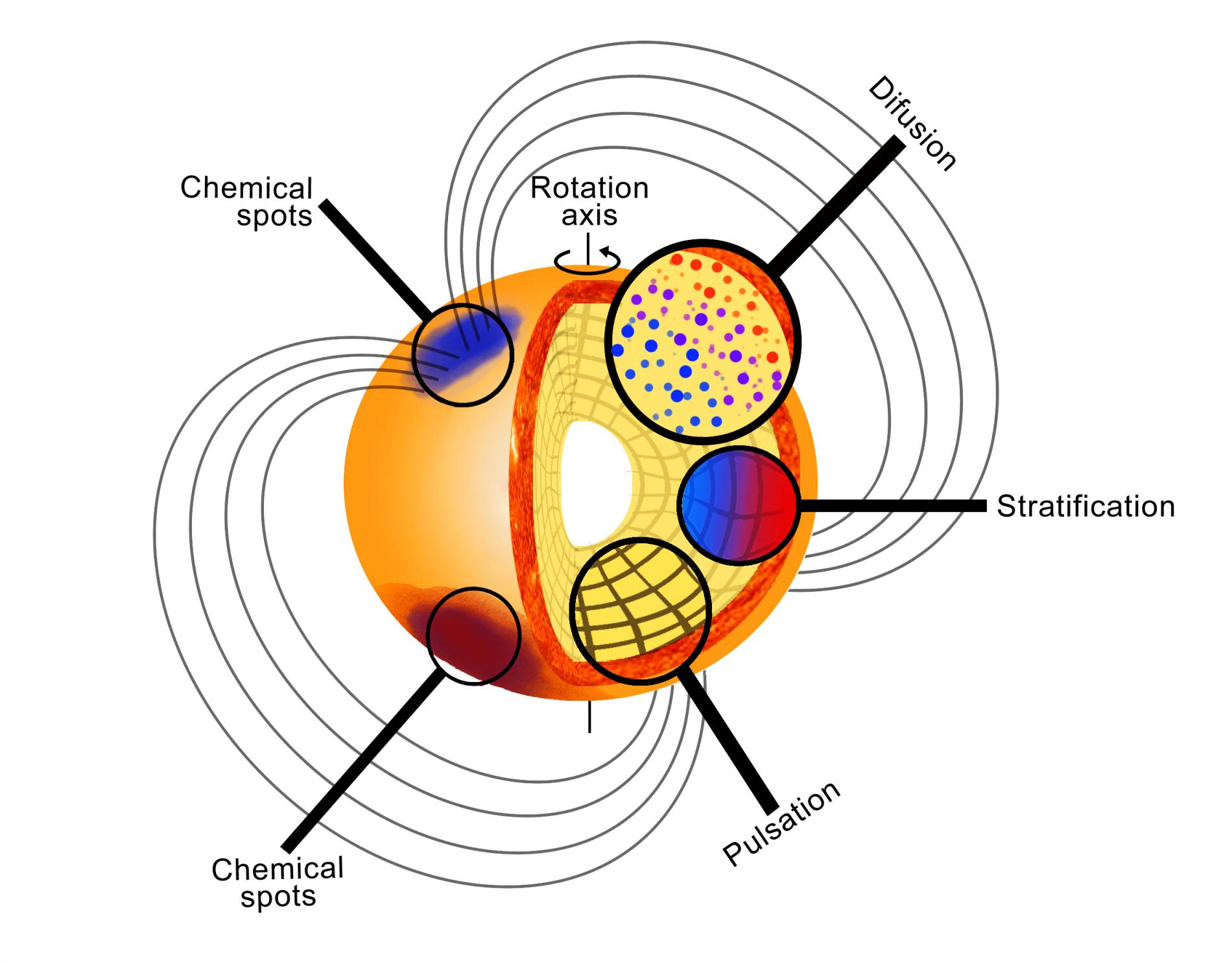TESS first light on stellar physics sheds light on roAp stars, the extreme pulsators
TESS data has allowed to find five roAp, a type of rare stars that shows rapid pulsations, intense magnetic fields and a peculiar chemical composition
TESS (MIT-NASA), which will examine more than two hundred thousand stars throughout its two years of life, is one of the most important exoplanet research projects of the moment. But its data will also provide a privileged view of the physics of the stars through the study of their pulsations. A work, with the participation of the Institute of Astrophysics of Andalusia (IAA-CSIC), publishes the results of the first light of the satellite, focused on a peculiar and not very well known stars, the roAp type.
Stars show periodic changes in their surface. Known as pulsations (or oscillations), their study allows to determine the composition and structure of the stellar interior, as well as its mass, density or age. An international team of astronomers, with the participation of the Institute of Astrophysics of Andalusia (IAA-CSIC) and the University of Granada, searched for pulsations in a sample of five thousand stars observed in the first two months of observation of TESS and detected five roAp stars.

These stars, whose name comes from their rapid rate of oscillation ("ro", of rapidly oscillating), are type A stars, more massive than the Sun, that also show extraordinarily intense magnetic fields and a peculiar chemical composition, with superabundance of some heavy elements, such as strontium or chromium.
"TESS data show that less than 1% of type A stars are fast Ap-type pulsators. However, the discovery of these stars can contribute greatly to the correct modeling of stellar evolution, because roAp stars are unique test benches for the modeling of the physical processes responsible for the segregation of chemical elements", says Margarida Cunha, a researcher at the Portuguese Institute of Astrophysics and Space Sciences (IA) who coordinates the research.
Among the new roAp discovered is the fastest known, which completes a pulsation every 4.7 minutes. In addition, two of these five stars are a challenge for the current understanding of this type of stars: one shows a lower temperature than corresponds to the models and another exhibits unexpectedly high pulsation frequencies.
"The pulsation amplitudes of these stars can be very low. To date, only few stars of this type had been detected and we did not know if it was due to the limitations of the observation from the ground. The ultra-precise data provided by TESS allow us to conclude that these stars are not difficult to observe, but that they are rare. The observations presented in this work involve interpretative challenges that urge us to rethink the Ap star pulsation theory", says Javier Pascual, astronomer at the Institute of Astrophysics of Andalusia (IAA-CSIC) who participates in the research.
These new results were only made possible because the TESS satellite is continuously observing the stars for periods of at least 27 days, outside the interference of the Earth's atmosphere, something ground-based observatories cannot achieve. “The correct modeling of these physical processes is amongst the most challenging goals faced in stellar evolution research. The discovery of new roAp stars by TESS, as well as the exquisite new data the satellite is providing on roAp stars previously discovered from the ground, will be key to achieving this goal”, concludes Margarida Cunha (IA).

M. S. Cunha et al. "Rotation and pulsation in Ap stars: first light results from TESS sectors 1 and 2”. Monthly Notices of the Royal Astronomical Society, (June 2019) arXiv:1906.01111
Instituto de Astrofísica de Andalucía (IAA-CSIC)
Unidad de Divulgación y Comunicación
Silbia López de Lacalle - sll[arroba]iaa.es - 958230676
https://www.iaa.csic.es
https://divulgacion.iaa.csic.es

